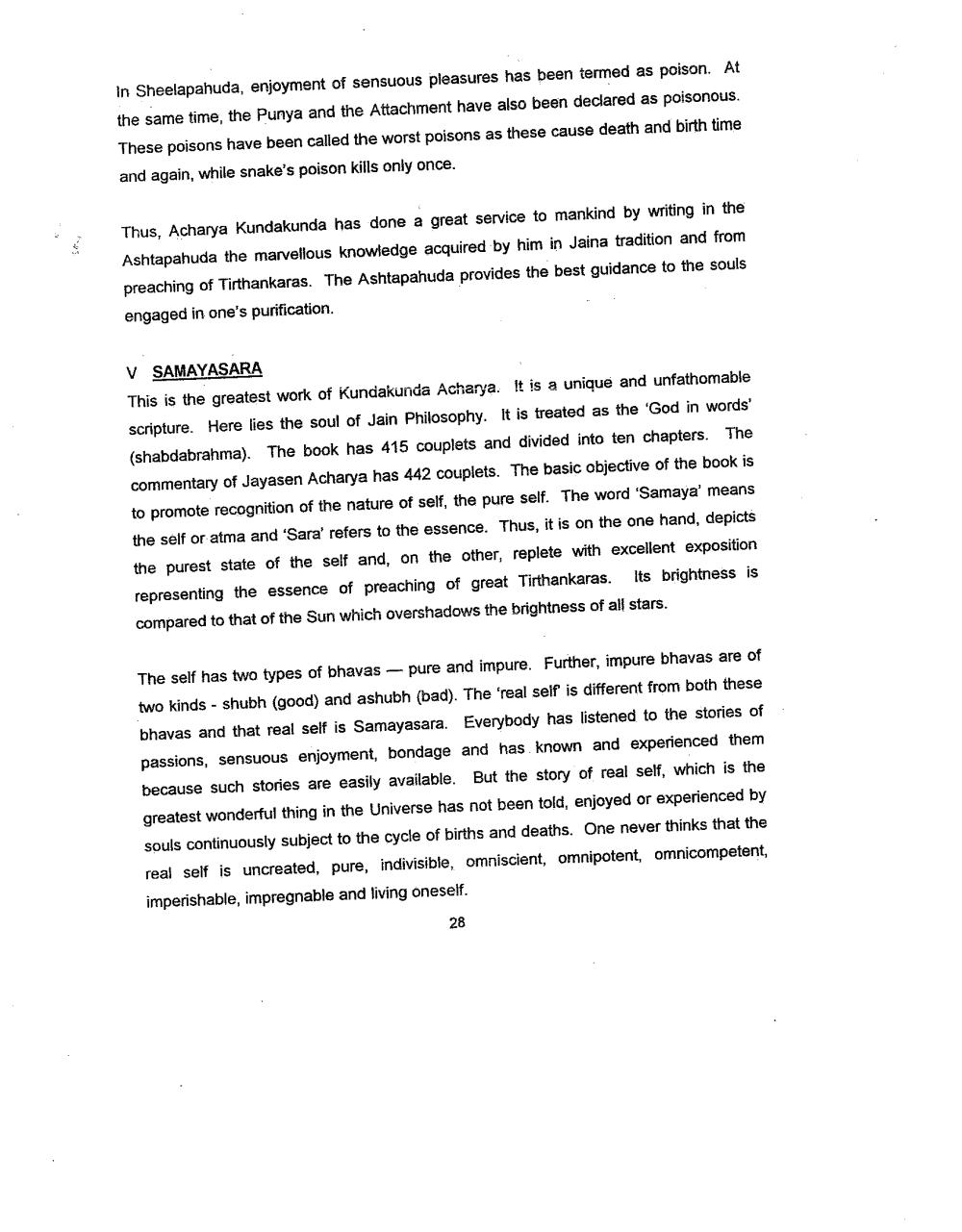________________
In Sheelapahuda, enjoyment of sensuous pleasures has been termed as poison. At the same time, the Punya and the Attachment have also been declared as poisonous. These poisons have been called the worst poisons as these cause death and birth time and again, while snake's poison kills only once.
Thus, Acharya Kundakunda has done a great service to mankind by writing in the Ashtapahuda the marvellous knowledge acquired by him in Jaina tradition and from preaching of Tirthankaras. The Ashtapahuda provides the best guidance to the souls engaged in one's purification.
V SAMAYASARA This is the greatest work of Kundakunda Acharya. It is a unique and unfathomable scripture. Here lies the soul of Jain Philosophy. It is treated as the 'God in words' (shabdabrahma). The book has 415 couplets and divided into ten chapters. The commentary of Jayasen Acharya has 442 couplets. The basic objective of the book is to promote recognition of the nature of self, the pure self. The word 'Samaya' means the self or atma and 'Sara' refers to the essence. Thus, it is on the one hand, depicts the purest state of the self and, on the other, replete with excellent exposition representing the essence of preaching of great Tirthankaras. Its brightness is compared to that of the Sun which overshadows the brightness of all stars.
The self has two types of bhavas - pure and impure. Further, impure bhavas are of two kinds - shubh (good) and ashubh (bad). The 'real self is different from both these bhavas and that real self is Samayasara. Everybody has listened to the stories of passions, sensuous enjoyment, bondage and has known and experienced them because such stories are easily available. But the story of real self, which is the greatest wonderful thing in the Universe has not been told, enjoyed or experienced by souls continuously subject to the cycle of births and deaths. One never thinks that the real self is uncreated, pure, indivisible, omniscient, omnipotent, omnicompetent, imperishable, impregnable and living oneself.
28




